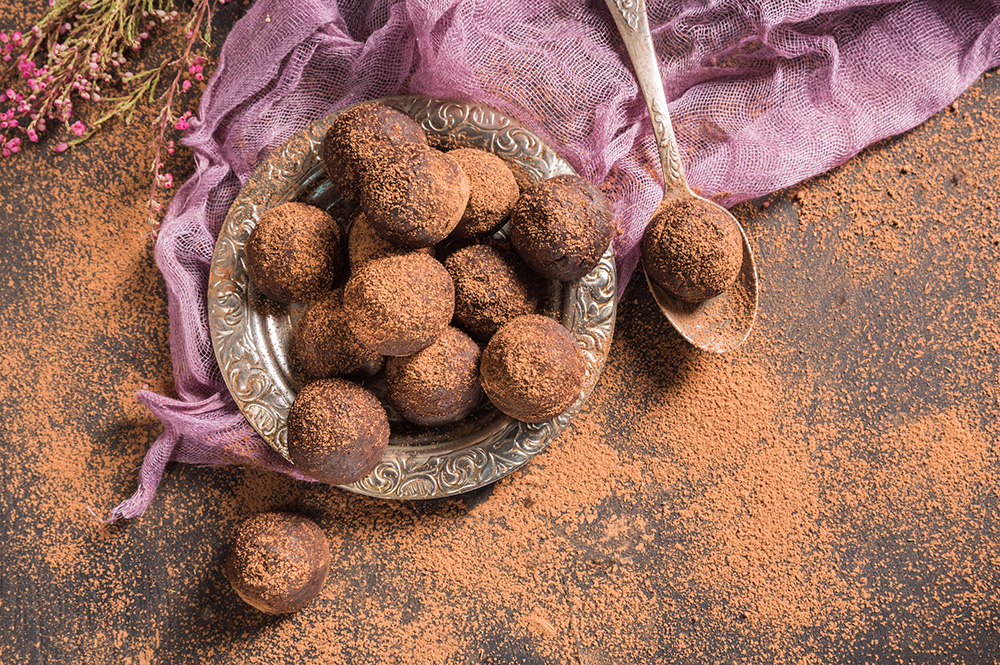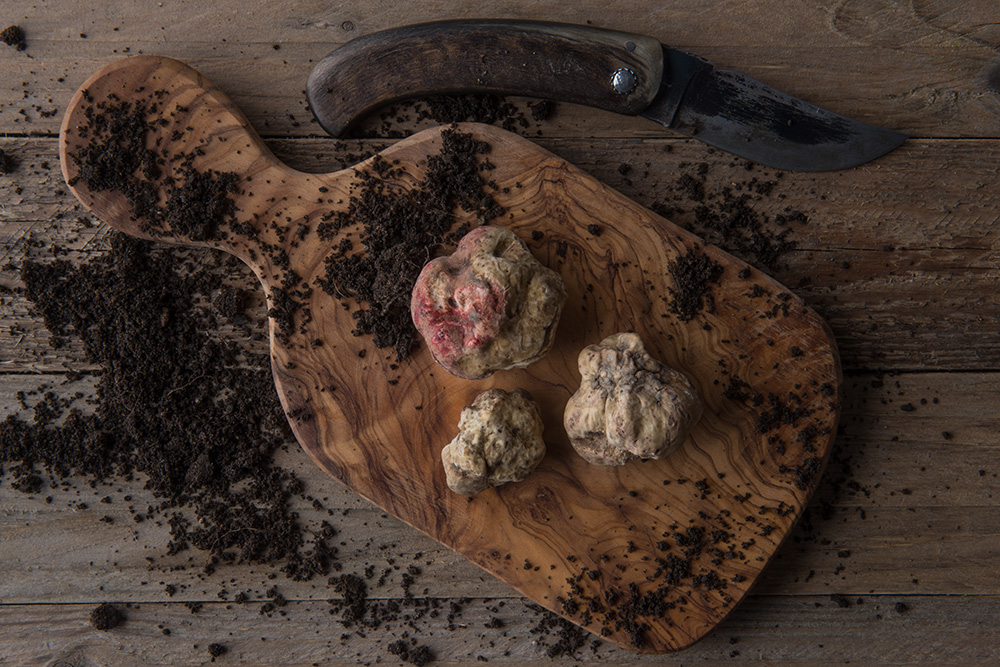Whether sweet or savoury, a truffle is the perfect present for your foodie friend this Christmas, as Dr Sue Bailey discovers in her latest Cambridge on a Plate
What does the dedicated foodie want for Christmas? When our daughter was 12, she proudly presented us with a generous piece of aromatic French black périgord truffle from her holiday with friends – but she complained about the pungent smell that permeated their journey home. Now, she would dither over a truffle-filled creamy la bouse cheese from Culinaris or cocoa and cinnamon-dusted artisanal chocolate truffles from Chocolat Chocolat.
The alternative is to ask Father Christmas for a truffle hound to hunt out the secret local English truffles which once must have grown prolifically. To ‘stew a pound of truffles in port wine’ is lavish indeed, but comes from a handwritten recipe book of 1826 from a household near to Cambridge.
The history of British chocolate making goes back to the Victorian Quakers
The more affordable chocolate truffles are so-called after their resemblance to the soil-covered round lumpiness of savoury truffles. As Adam Geileskey from Hotel Chocolat, an original Cambridge start-up, says: “The history of British chocolate making goes back to the Victorian Quakers, with chocolate drinks seen as a healthy alternative to gin. Fry’s of Bristol created the first solid chocolate in the mid-1800s.”
He reveals the latest products he has been working on are lower-calorie truffles using fruit juices or water rather than cream. For Christmas, the company is also launching of a range of vegan truffles using hazelnut milk instead of cream.
In France, chocolate truffles were created accidentally by renowned Victorian chef Auguste Escoffier, or one of his assistants. “It is said that he dropped cream into chocolate by mistake and, when it hardened, the thick paste could be rolled by hand into truffles. He called this mixture a ganache – the French term for a fool – perhaps his poor assistant,” explains local chocolatier Isabelle Chappell, of Chocolat Chocolat, one of the largest independent chocolate shops in the UK.
She goes on to say: “A bit later in the 1920s, Neuhaus, a Belgian company, created an outer shell for their truffles, which is what we now know as a Belgian truffle. Now the softer French truffle may also be flavoured, with the English trend at the moment flavouring with gin and also fruit. The ganache cream at the centre of a Belgian truffle can be flavoured – or the chocolate shell, too.” According to Isabelle, the most popular at the moment is a salted caramel truffle.
 This interesting flavor combination might well have found favour with the 18th-century Cambridge University professor of botany, Richard Bradley, who suggests how widespread fungal truffles were in the 18th century. In his household management and cookery book, he writes that truffle: “Affords such Variety of agreeable Dishes, that I have taken care to send to a curious Gentleman abroad for the Receipt how to dress it: They are very plenty in our Woods in England”.
This interesting flavor combination might well have found favour with the 18th-century Cambridge University professor of botany, Richard Bradley, who suggests how widespread fungal truffles were in the 18th century. In his household management and cookery book, he writes that truffle: “Affords such Variety of agreeable Dishes, that I have taken care to send to a curious Gentleman abroad for the Receipt how to dress it: They are very plenty in our Woods in England”.
His first simple recipe says: “Truffles, some as large as one’s fist, need to be peeled, part cut through, salt and peppered then reclosed, wrapped in damp paper and then cooked gently over a wood fire and brought to the table wrapped in a napkin.”
His next recipe involves washing, peeling, slicing, and then stewing the truffles with salt, a bay leaf and Jamaica pepper in white wine. Another recipe involves frying the slices in butter or hog’s fat and a little wheat flour, draining them, recooking in a little gravy, salt, pepper and sweet herbs, then draining them and serving with lemon slices. Alternatively, they can be stewed ‘as fowls’ and served with a white or brown sauce.
There are two types of English truffles – the winter or burgundy truffle, tuber uncinatum, harvested between August and late December, and the summer truffle, tuber aestivum, harvested between April and August, now recognised as the same species. The first is darker, nuttier and more pungent; the other is paler and has a more subtle aroma and flavour. The odour of both truffles is of mushrooms, undergrowth and roasted barley malt, tasting of hazelnuts. The winter truffle has a stronger odour. Neither are as strong or costly as the black périgord or white Italian truffles.
The idea of a contemporary chef or cook stewing truffles rather than grating them delicately over a dish raises interesting questions. If the truffles were stewed, was this because no one had thought of consuming them raw or because they were prolifically available?
At Cambridge University Botanic Garden, scientific research is being carried out into the life cycle of English truffles and, as the garden has been in existence for 170 years, it is an ideal place to look at the favoured host trees. Truffles have a symbiotic relationship with trees, exchanging water and nutrients for hosting among their roots.
Truffles were collected commercially in England up to 1935. But as loss of local knowledge in the first world war, loss of rural land to house and road building, plus felling of ancient trees meant that the woods the truffles once flourished in were gone. However, gentler land management and climate change mean a return to a more welcoming environment for truffles.
So, where do I go for my truffles? (As I do not yet have my truffle hound.) Should I hunt out Bumble & Oak’s rurally inspired chocolate truffles and gold-dusted acorns by Riadh Falvo, who is based locally in Newnham at Meadows Shop? As a trained chocolatier, she formulates artisanal chocolate recipes using tea infusions, herbal concoctions, foraged cordials and tinctures.
Who knows, might I find under the tree a lavish box of Hotel Chocolat tipsy truffles, or cinnamon-dusted Chocolat Chocolat truffles? Or will my daughter present me with a truffle-filled cheese from Cambridge Cheese Company? Or maybe truffle honey and truffle oil from Culinaris or The Gog? What delightful Christmas alternatives.

